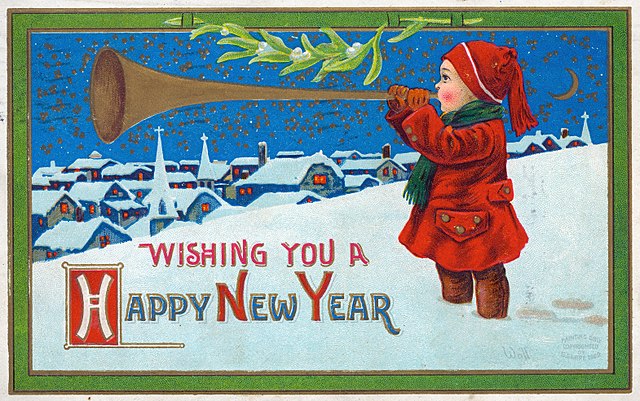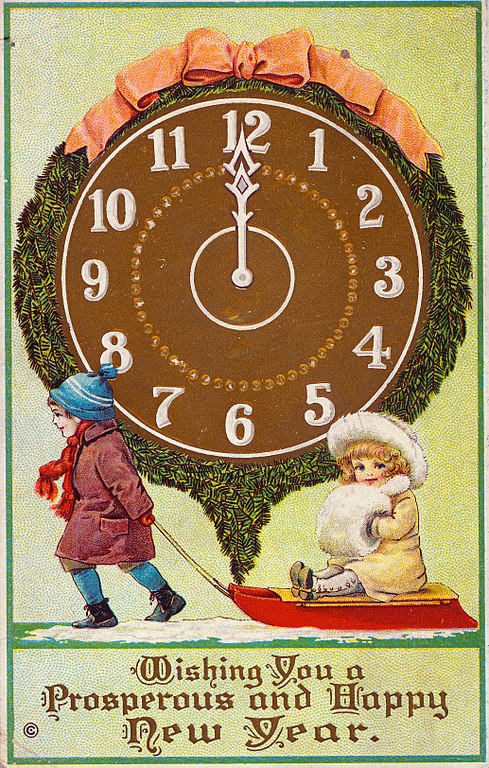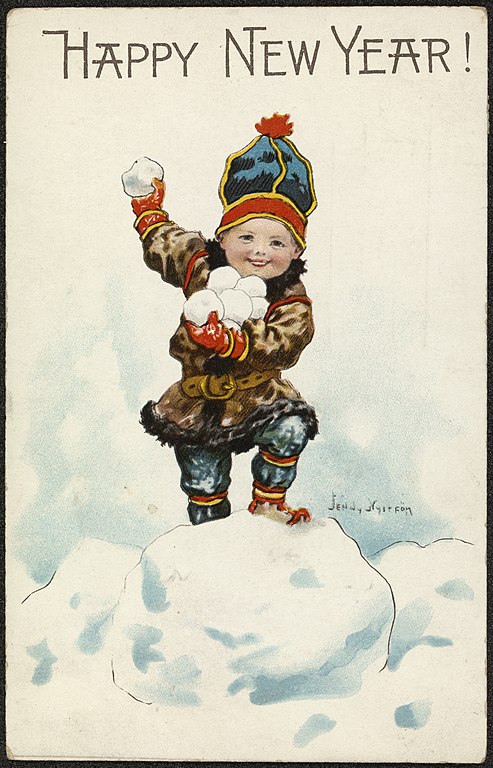
Thammasat University students who are interested in folklore, literature, cultural studies, sociology, mythology, and related subjects may find it useful to consult the TU Library collection of books about different aspects of New Year celebrations worldwide.
As all students know, New Year’s Eve, also known as Old Year’s Day or Saint Sylvester’s Day in many countries, is the evening or the entire day of the last day of the year, 31 December.
This tradition follows an ancient Roman custom, based on mythology.
In many countries, New Year’s Eve is celebrated with dancing, eating, drinking, and watching or lighting fireworks.
Some Christians attend a watchnight service.
The celebrations generally go on past midnight into New Year’s Day, 1 January.
In China, for example, celebrations are held in major cities.
Fireworks and rock concerts have taken place in Beijing’s Solana Blue Harbor Shopping Park, while cultural shows and other events are held at the city’s Millennium Monument, Temple of Heaven, Great Wall of China, Olympic Green, and the Summer Palace.
Since 2011, a light and sound show has been held at The Bund in Shanghai, a few minutes before midnight.
In Hong Kong, crowds gather in shopping districts like Central, Causeway Bay and Tsim Sha Tsui.
Beginning in 2008, a 60-second numerical countdown to New Year’s, consisting of LED lights and pyrotechnic display effects, on the facade of Two International Finance Centre was launched, followed by a fireworks display, alongside an exhibition of the Symphony of Lights.
For the arrival of 2013, the Hong Kong Convention and Exhibition Centre initiated the countdown, while the fireworks display and A Symphony of Lights show were extended to eight minutes.
New Year’s Eve celebrations in Singapore are centered in Marina Bay, which had hosted the Marina Bay Singapore Countdown with light shows being held in December under Shine The Light programme while fireworks at the city are not permitted on New Year’s Eve.
The most prominent New Year’s event in Taiwan is a major fireworks show launched from the Taipei 101 skyscraper in Taipei.
In 2018, the show was enhanced by the installation of a new LED display system on the north face of the tower between its 35th and 90th floors, which can be used to display digital animation effects.
This change countered a reduction in the number of firework shells launched during the show, as part of an effort to produce less pollution.

In Japan, New Year’s Eve is used to prepare for and welcome Toshigami, the New Year’s god. Japanese clean their homes and prepare Kadomatsu or Shimenawa to welcome the god before New Year’s Eve.
Buddhist temples ring bells 108 times at midnight.
In most cities and urban areas across Japan, New Year’s Eve celebrations are usually accompanied by concerts, countdowns, fireworks and other events.
In Tokyo, the two most crowded celebrations are held at the Shibuya crossing in Shibuya and the Zojoji Temple in Minato.
Japanese gather around the Zojoji Temple to release helium balloons with New Year’s wishes up in the sky and watch the lighting of Tokyo Tower and Tokyo Skytree with a year number displayed on the observatory at the stroke of midnight.
Although the traditional Korean New Year (Seollal) is typically a more important holiday in both North and South Korea, 31 December as New Year’s Eve is also celebrated.
Most cities and urban areas in both Koreas host New Year’s Eve gatherings.
In Pyongyang, the capital of North Korea, the chimes of the clock at the Grand People’s Study House and the national fireworks display along Kim Il-sung Square, Juche Tower and the surrounding areas signal the start of the New Year.
In South Korea, two of the biggest celebrations take place in the capital of Seoul: the ringing of Bosingak bell 33 times at midnight and fireworks display at Myeong-dong, and an LED laser light show and fireworks display at the Lotte World Tower in Songpa-gu.
In the Philippines, New Year’s Eve (Bisperas ng Bagong Taon) is a special non-working holiday and Filipinos usually celebrate in the company of family or close friends.
Traditionally, most households would attend church for year-end services and afterwards, host or attend an abundant midnight feast called the Media Noche.
Typical dishes include pancit (a noodle dish meant to symbolize for a longer life) and hamón (dry-cured ham), while lechon (roasted pig) is usually prepared as is barbecued food and various desserts.
And of course in the Kingdom, apart from the traditional Thai New Year Songkran (Thailand) (which falls on 13 April or 14 April), Thais also celebrate the arrival of the Gregorian New Year on 1 January with families, relatives and friends, which includes a family dinner and following different customs.
It is a public holiday. In most cities and urban areas across Thailand, New Year’s Eve celebrations are accompanied by countdowns, fireworks, concerts and other major events.

Here are some thoughts about the New Year by different authors, many of whom are represented in the TU Library collection:
Hope
Smiles from the threshold of the year to come,
Whispering ‘it will be happier’…
- Alfred Lord Tennyson
For last year’s words belong to last year’s language
And next year’s words await another voice.
- T. S. Eliot, Four Quartets
And now let us believe in a long year that is given to us, new, untouched, full of things that have never been, full of work that has never been done, full of tasks, claims, and demands; and let us see that we learn to take it without letting fall too much of what it has to bestow upon those who demand of it necessary, serious, and great things.
- Rainer Maria Rilke, Letters
Each age has deemed the new-born year
The fittest time for festal cheer.
- Walter Scott
Kindness, kindness, kindness.
I want to make a New year’s prayer, not a resolution. I’m praying for courage.
- Susan Sontag
“Then what is Durin’s Day?” asked Elrond.
“The first day of the dwarves’ New Year,” said Thorin, “is as all should know the first day of the last moon of Autumn on the threshold of Winter. We still call it Durin’s Day when the last moon of Autumn and the sun are in the sky together. But this will not help us much, I fear, for it passes our skill in these days to guess when such a time will come again.”
- J. R.R. Tolkien, The Hobbit

(All images courtesy of Wikimedia Commons)
